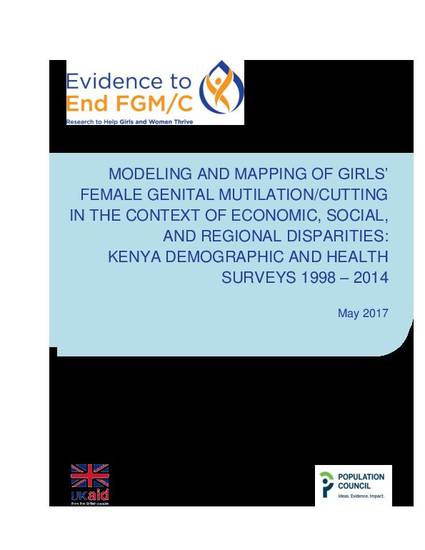
The aim of this research study is analysis of successive household data for estimating and revealing trends, similarities, and differences in geographic patterns for the burden of female genital mutilation/cutting (FGM/C) and related risk factors among girls ages 14 and younger in Kenya. This Evidence to End FGM/C study, from a coalition led by the Population Council, is intended to contribute to a deeper understanding of the recent burden of FGM/C among the girls within this very young age group, and to enhance knowledge of the geographic distribution of this practice over time. The report will inform current elimination efforts by helping identify girls at risk, planning campaigns and targeting interventions, as well as monitoring future progress. This report provides recommendations to assist national partners in planning interventions.
